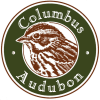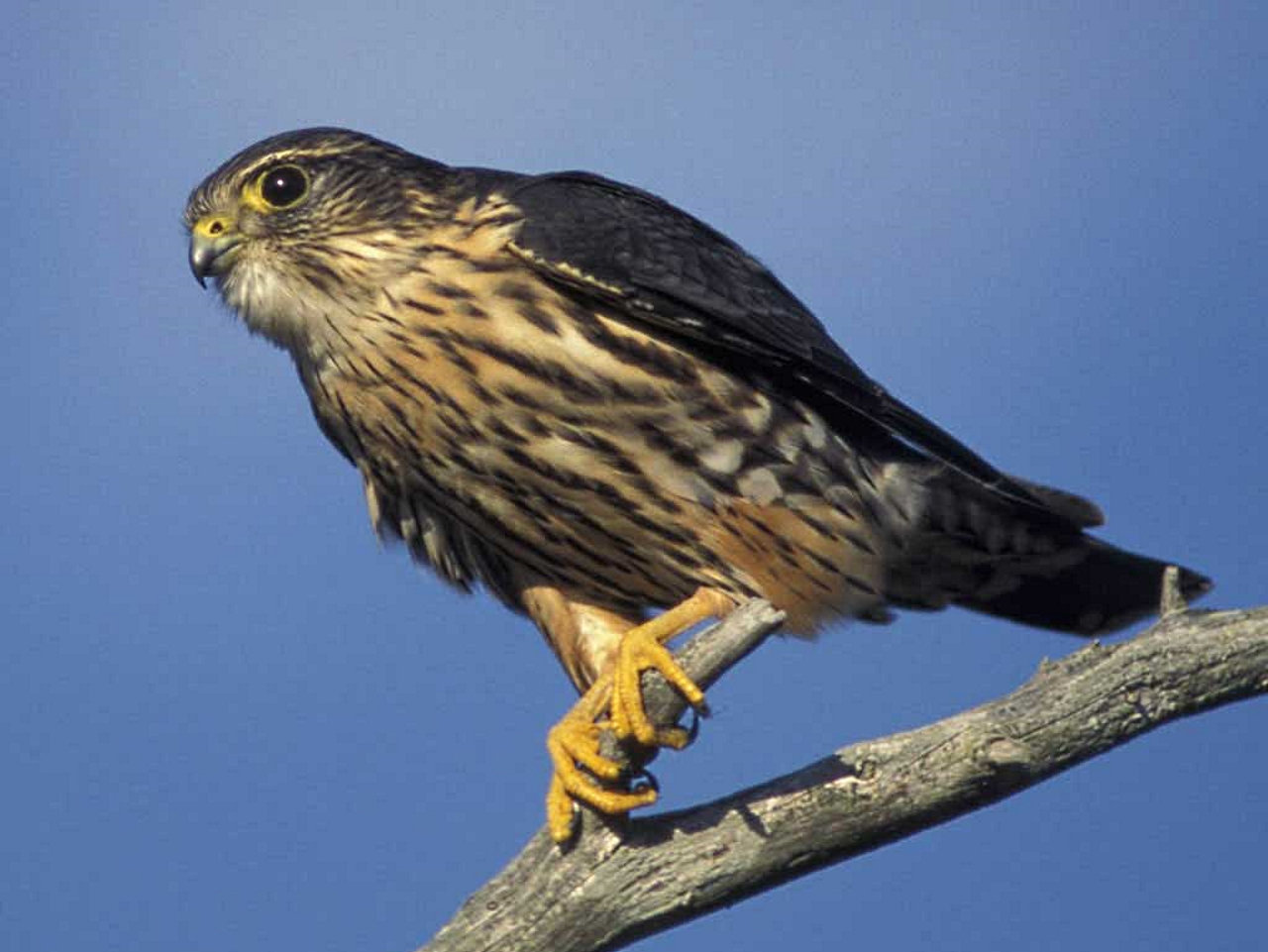Good Turnout Overwhelms Cold Weather on 2009 Columbus CBC
On December 20, 60 observers sponsored by CAS spent the day counting birds in different areas in and around Columbus. Despite cold weather for much of the prior 2 weeks, and a light snowfall the prior day, the Count date was dry and partially clear, with still water partly frozen and moving water open. The final total was 80 species and 45,832 individual birds, which are very good numbers for a late-ish date and cold weather. We had no jaw-dropping rarities, but the large number of observers helped pull out many uncommon expected species.
Count Date
December 14; 6:30 a.m. To 5:30 p.m. Temp. 24 to 34. Wind WSW 0-3 mph Still water mostly frozen, moving water open. A.M. Partly cloudy; P.M. Partly cloudy. Observers: 54 in the field in 13-15 parties, 6 at feeders. Total party hours: 126 (110 on foot, 16 in cars). Total Party miles: 220 (88 on foot, 132 in cars) Owling: 3.0 hours
Observers
Paul Anderson, Lizzie Blunk, Charlie & Linda Bombaci, Nancy Bringartner, Don Burton, Doug Cook, Bethany Dauner, Lindsay & Brad Deering, Ian Dowden, Larry DeAtley, Brian Ellyson, Sheila Fagan, Diana Fowler, Charles Gambill, Paul Gardner, Bret Graves, Kay Greisen, Elayna Grody, Ann & Greg Hoke, Monica Johnson, Michael & Rebecca Jordan, Laura Kearns, Linda Kelly, Bill Kinkead, Ron Koble, Helen & Bruce Lindsay, Neil Marquard, Bernie Master, Carloyn May, Jim McCormac, Joe Meara, Steve Meisky, Dick & Kathy Miller, Rick & Richard Oxley, Pat Phillips, Sam Pollock, Pam Raver, Cheri Rida, Paul Rodewald, Caroline & Paul Rountree, Kristi Rowland, Bob Royse, Darlene Sillick, Bruce Simpson, David Slager, Tom & Jody Slemmer, Doug & Deena Snapp, David Spain, Charlotte Thielbert, Rob Thorn, Dick Tuttle, Pam Unger, Bill Whan
Species
7 (high); Canada Goose – 3362; Wood Duck – 4; Black Duck – 450; Mallard – 1984; American Wigeon – 5; Gadwall – 9; N.Shoveler – 1; Ring-necked Duck – 93; Redhead – 1; Bufflehead – 1; Common Goldeneye – 1; Hooded Merganser – 127; Red-br. Merganser – 1; Ruddy Duck – 1; Sharp-shinned Hawk – 3; Cooper’s Hawk – 15; N.Harrier – 1; Bald Eagle – 4 (4a); Red-shouldered Hawk – 2; Red-tailed Hawk – 39; Merlin – 2; American Kestrel – 2; American Coot – 1; Wild Turkey – 33; Pied-billed Grebe – 13; Horned Grebe – 2; Double-cr.Cormorant – 1; Great Blue Heron – 51; Black-cr.Night Heron – 12; Bonaparte’s Gull – 2; Ring-billed Gull – 2157; Herring Gull – 26; Rock Pigeon – 1250; Mourning Dove – 389; Great Horned Owl – 6; Barred Owl – 3; Belted Kingfisher – 32; Red-headed Woodpecker – 12; Red-bellied Woodpecker – 165 (high); Yellow-bellied Sapsucker – 8; Downy Woodpecker – 201; Hairy Woodpecker – 23; N.Flicker – 61 (high); Pileated Woodpecker – 7; Blue Jay – 323; American Crow – 927; Carolina Chickadee – 553; Tufted Titmouse – 139; White-breasted Nuthatch – 174; Red-breasted Nuthatch – 8; Brown Creeper – 36; Carolina Wren – 71; Winter Wren – 1; Golden-crowned Kinglet – 14; Horned Lark – 26; Eastern Bluebird – 40; American Robin – 2385; N.Mockingbird – 31; European Starling – 25,805; American Pipit – 8; Yellow-rumped Warbler – 15; Eastern Towhee – 4; American Tree Sparrow – 60; Field Sparrow – 1; Song Sparrow – 112; E.Fox Sparrow – 3 (different teams); Swamp Sparrow – 3; White-throated Sparrow – 486; White-crowned Sparrow – 11; Dark-eyed Junco – 313; Red-winged Blackbird – 3; Common Grackle – 13; Brown-headed Cowbird – 43; icterid sp. – 90; N.Cardinal – 784; Purple Finch – 1; House Finch – 382; American Goldfinch – 543; House Sparrow – 1816
Totals: 80 species, 45,832 individuals
Species seen count week but not count day: Peregrine Falcon, Pine Warbler
Description
It was a good count for a cold day; even better if you consider that it was a medicre year for berries and cone seeds. We were also fortunate to have a decent weather day, when you consider how quickly the weather went bad after Christmas. While we lacked any of the startling rarities found in other recent counts, we found most of the expected birds, including a lot of unusual winter residents plus a nice bag of 19 species of waterfowl. The following list of notable hits and misses gives you a sharp summary of this year’s count:
Notables:
Mute Swans – 7 is our new high count. In fact, we probably had more, but this was the conservative estimate. The OSU/Grandview team saw 7 just themselves (Bret Graves, Doug Snapp).
Diving Ducks & Mergansers – these are always dicey for the Columbus Count, as we don’t have that many big lakes to attract them. Somehow we managed to pull in 7 species, including single Redhead (Hidden Lake – Bob Royse), Bufflehead (Greenlawn quarries – Jim McCormac, Bernie Master, et. al.), Common Goldeneye (Cherrybottom Park – Charlie Bombaci), and Red-br.Merganser (Alum Quarries – myself)
Grebes – 13 Pied-billed was a great number, spread among 4 different teams, and they were all pretty much in or along the Scioto from downtown down to the old Wastewater Treatment Plant. 2 Horned Grebes in a far south quarry were just icing.
Gulls – slowly, steadily, these birds are becoming a common winter feature hereabouts. We had over 2000 Ring-billed for the 5th straight year, led by over 500 on both the Griggs-Hidden Lake-Marble Cliff area (Bob Royse) and around the shopping malls and quarries in south Columbus (myself). Almost as startling were the 26 Herring Gulls, led by the 23 found around the OSU campus by the West Campus Team
Open Country Raptors – at the other extreme, these birds are disappearing from Columbus almost as fast as their habitats. We managed to corral a single Harrier (Greenlawn team) and a couple of Kestrels (Jefferson Township – Dick Miller, and Huber Ridge -Charlie Bombaci), but struck out on Rough-legged Hawk.
Merlins – as they adapt to our parks, we’re now expecting to find these sleek little falcons. Two were found this year: 1 in Greenlawn cemetery (Jim McCormac-Bernie Master et al.) and 1 at Wolfe Park near Bexley (Lyndsay & Brad Deering et al). They’re becoming more reliable than our nesting Peregrines.
Bald Eagles – more eagles, ho hum. If I ever get to that point, put me out of my misery. These grand birds of prey continue to become more regular around Columbus in winter, and we had 4 on the CBC. Probably the signature bird was an adult that appropriately soared over the Grange Center just as that team was starting out (Pam Unger). They were also found around the Frank Rd quarries (Jim McCormac-Bernie Master et al.), the Griggs – Hidden Lake area (Bob Royse), and even in Gahanna (Joe Meara, Kristi Rowland, Diana Fowler). It’s hard to imagine that they’ll become more common, but they’ve proven us wrong before.
Owls – It was a schizoid year for them: big owls were all over the place with 6 Great Horned and 3 Barred, but small owls were totally absent, with no Screech owls despite having several well-known nesting territories in the count circle, Perhaps the small ones were being very circumspect in the presence of so many big owls!
Wild Turkeys – they continue to settle into the forested northeast part of the circle, particularly in the Blendon Woods and Jefferson Township territories where 9 and 24 were found respectively this year (Bruce Simpson et al at Blendon, the Lindsays out in Jefferson Township).
Big Woodpeckers – record or near-record numbers were here for Red-bellied, Flicker, and Pileated Woodpeckers. Red-headed Woodpeckers, with 12, also had a good count. Could these birds be heralding a major Emerald Ash Borer outbreak for this Spring? We’ll see.
Chickadees vs. Titmice – these birds continue to run in opposite directions. The 500+ Carolina Chickadees was a great number, but the 139 Tufted Titmice was below average for that declining species. Chickadees are clearly benefiting from the large number of birdfeeders in Columbus, but why aren’t Titmice also being swept up in this tide? Is something else crucial to their winter survival, or are they easy targets for our urban Cooper’s hawks?
Eastern Bluebirds – used to be that 40 would be a remarkable winter count for them, but now it’s quite average. It tells you a lot about how they are successfully adapting to our winter, as well as how we are learning to look for them, especially along the Alum Creek and Big Walnut Creek valleys where we find most of ours.
Mockingbirds – while 31 is well short of our Count Record, it is the largest count in 7 years. They were seen by 10 different teams, headed by 6 at both OSU West Campus (Paul Rodewald-Dave Slager) and Three Creeks (myself), follwed by 5 at Griggs-Hidden Lake (Bob Royse). And this was not a good berry winter; think of what the numbers might be if we had more honeysuckle berries.
Larks & Pipits – these birds actually have become more regular on recent counts, probably because they don’t have so many big fields to hide in anymore. All of our Horned Larks were out at the Waterman Farms this year (P.Rodewald-D.Slager), while a small flock of Pipits materialized at Natzger park in southeast Columbus.
Pine Warbler – our nemesis bird, it has been on the count only once, but in recent years has managed to make an appearance a day or two before or after the Count date. This year one turned up at Greenlawn cemetery a day after the Count.
Blackbirds – once again we managed to pull in a few Redwings, grackles, and cowbirds. In fact, it was a fairly good year for cowbirds, with 43 seen by 6 teams. But blackbirds look to never again reach the thousands of birds that were seen here in the late 1970s – early1980s, mostly during the heyday of the West Campus Ag farms at OSU. Sadly, much of these farms have moved to the Wooster campus.
Winter Finches – they remain strangely absent from Columbus, with only 1 Purple Finch this year (Clintonville team), and no siskins, grosbeaks, or crossbills. It’s not like we don’t ever get them; Greenlawn cemetery has a rich history of them in many winters. This just happened not to be one of them.

